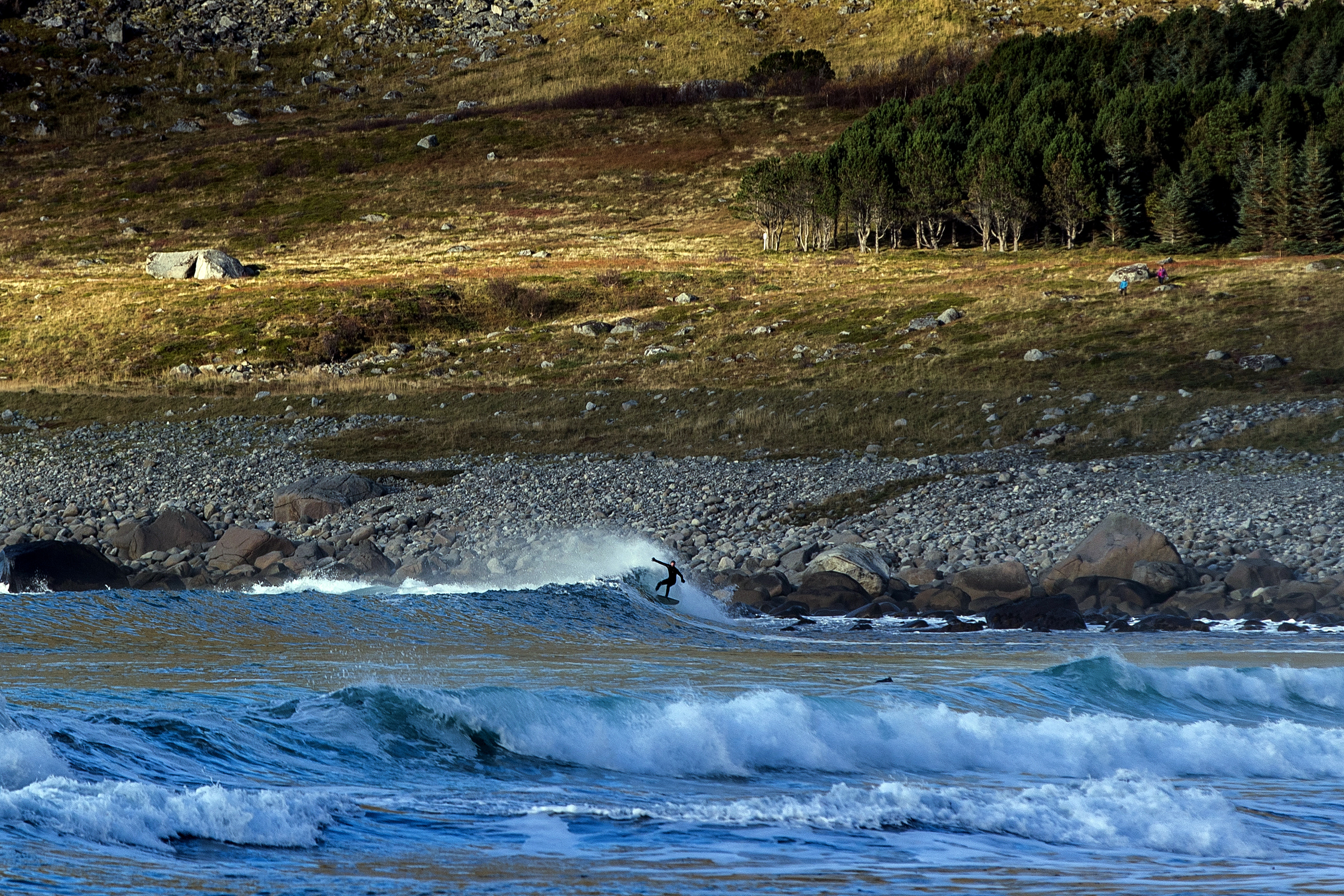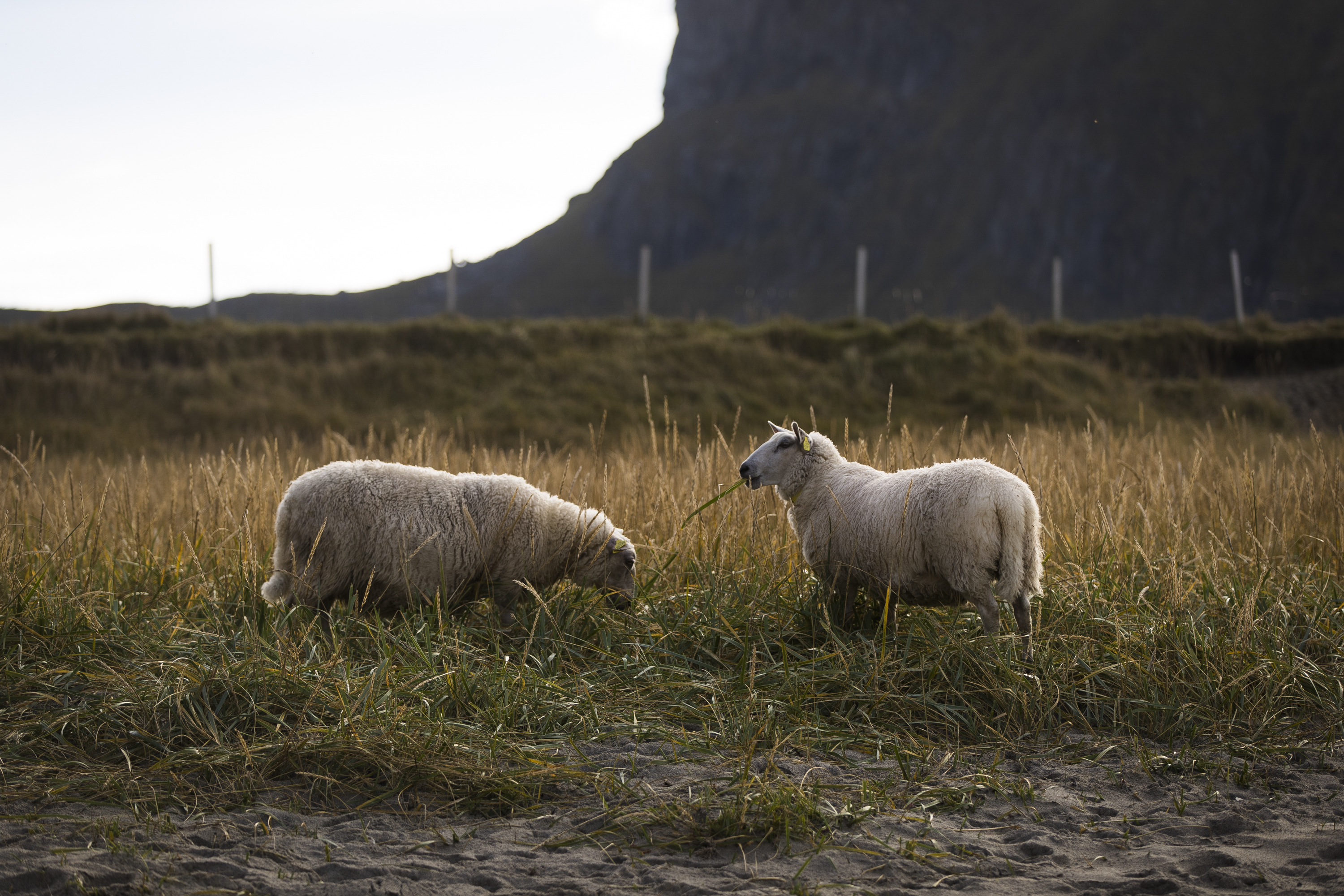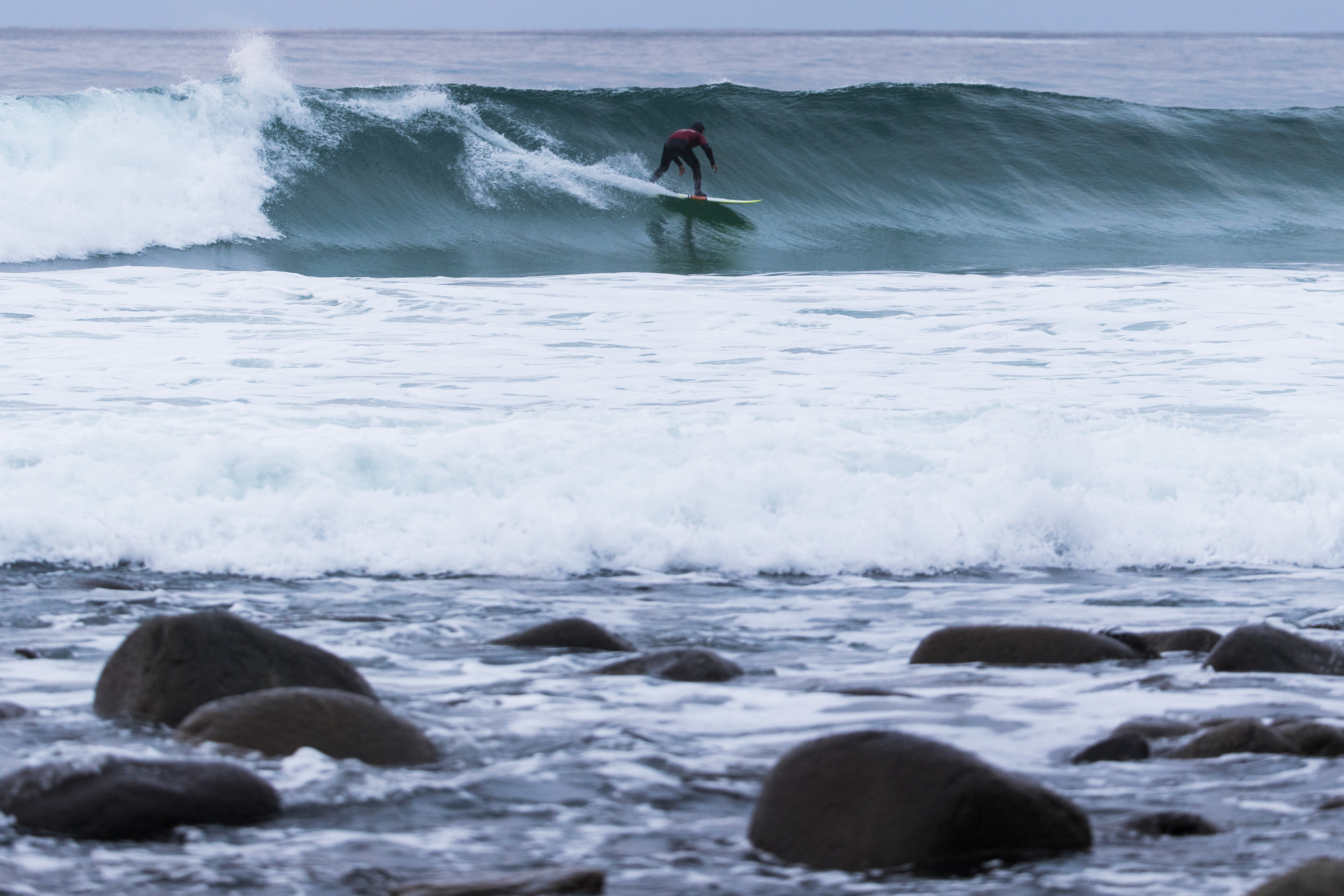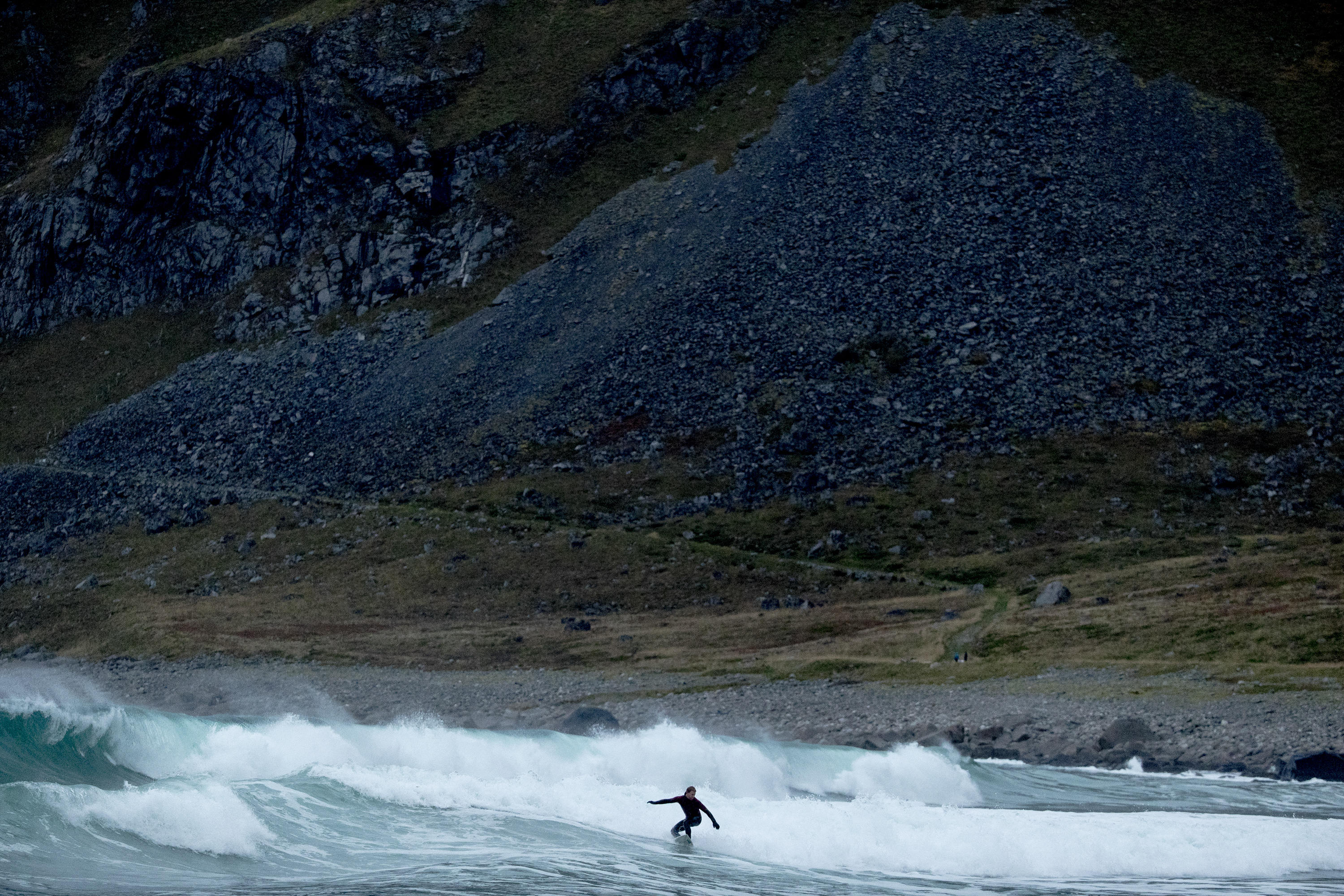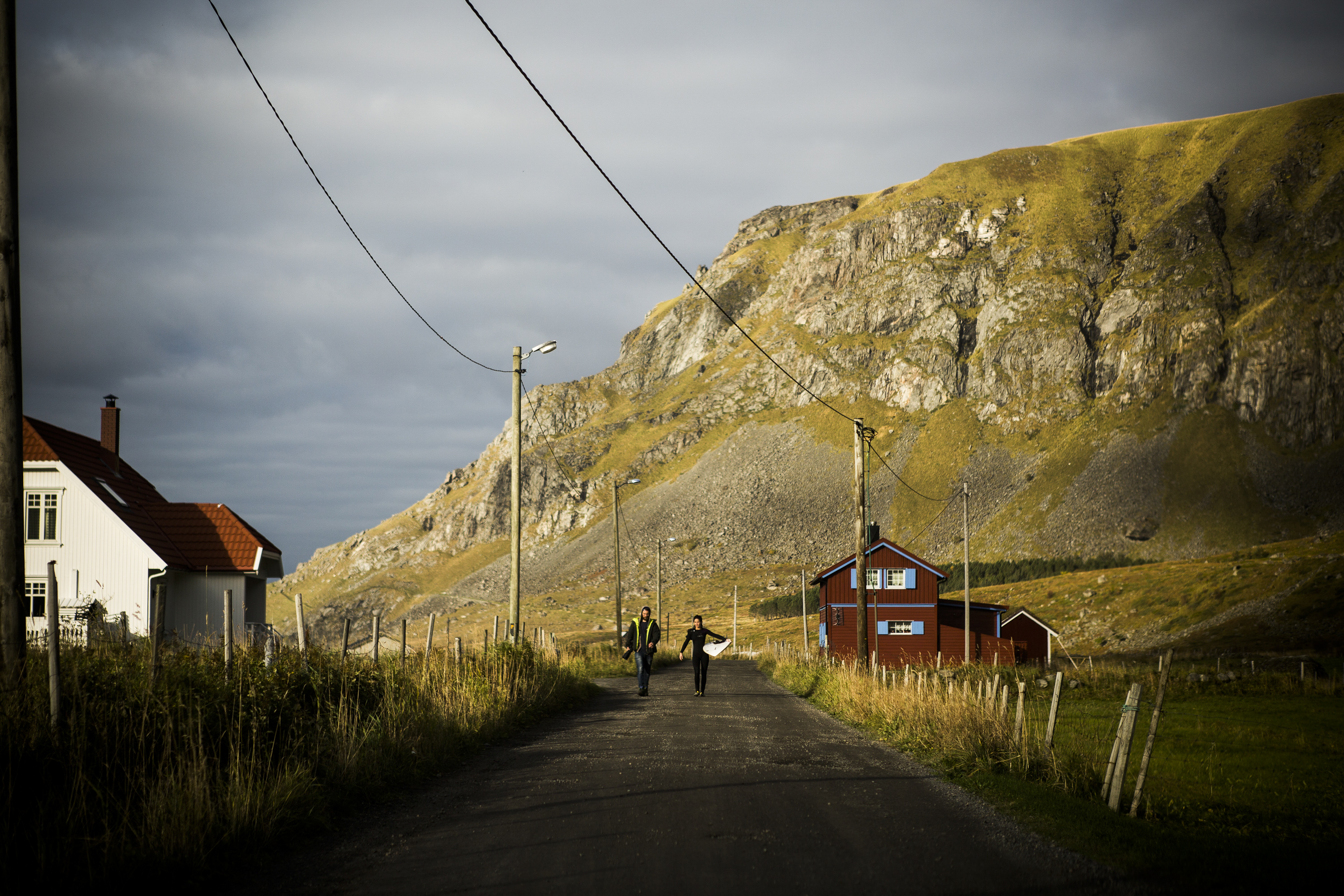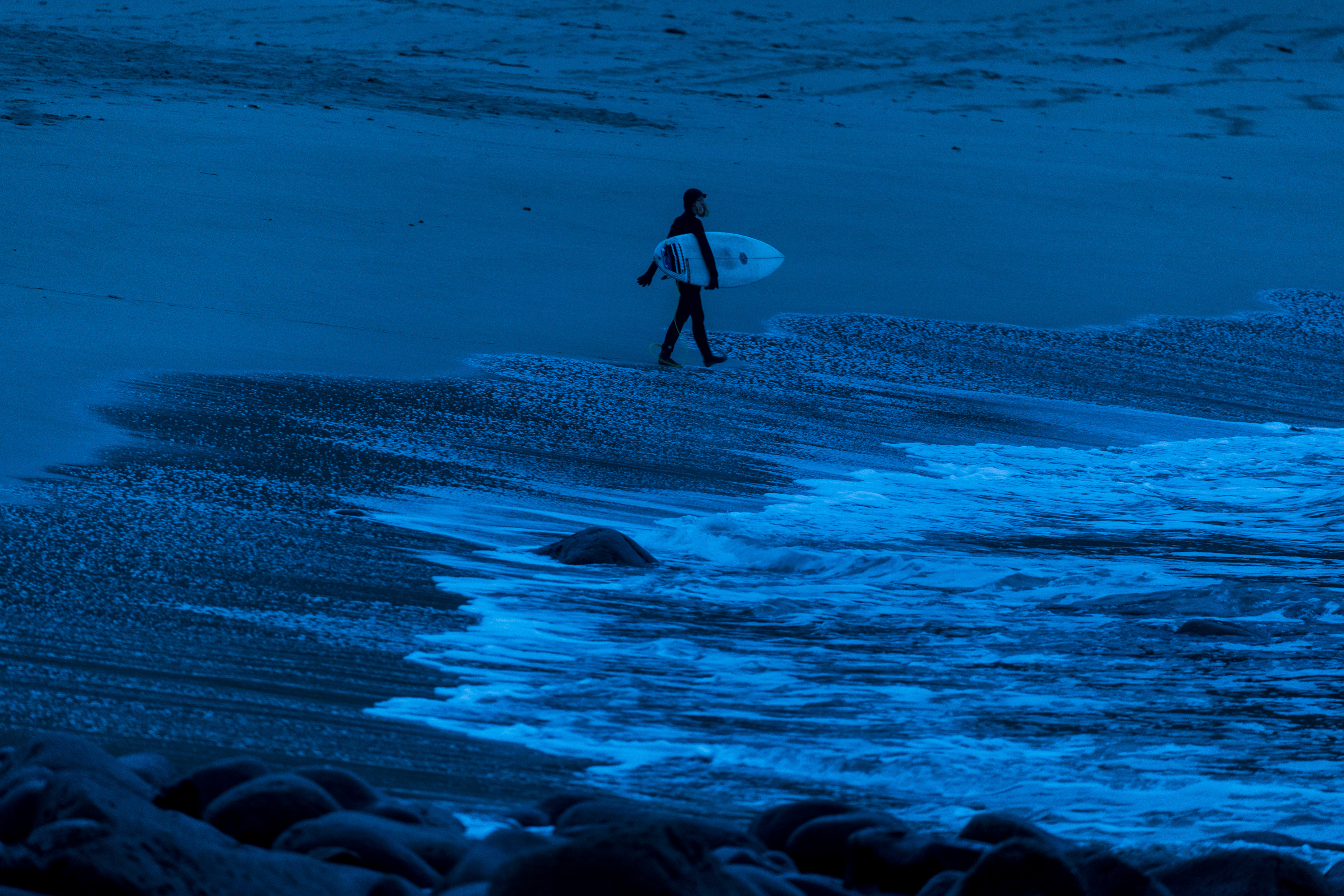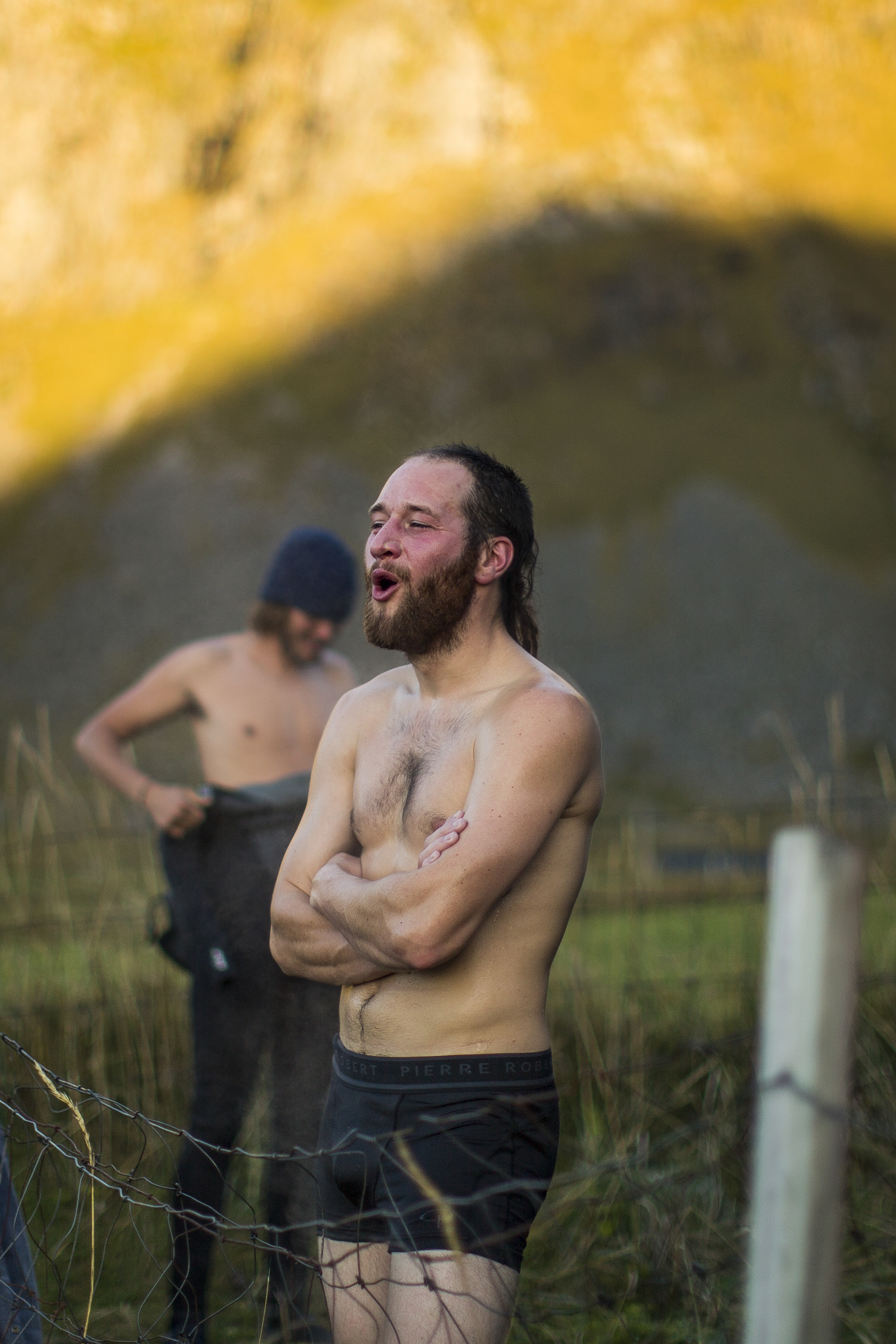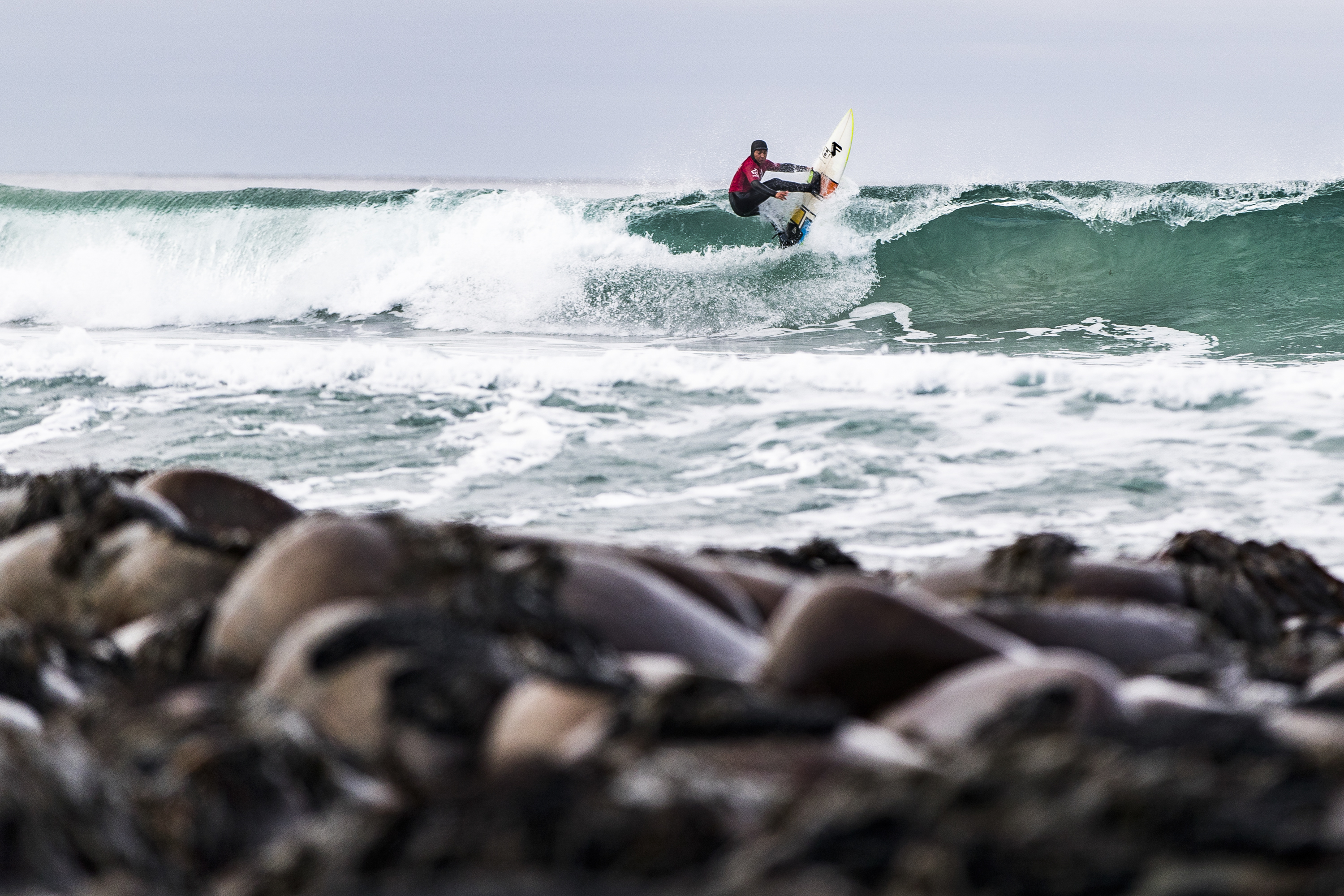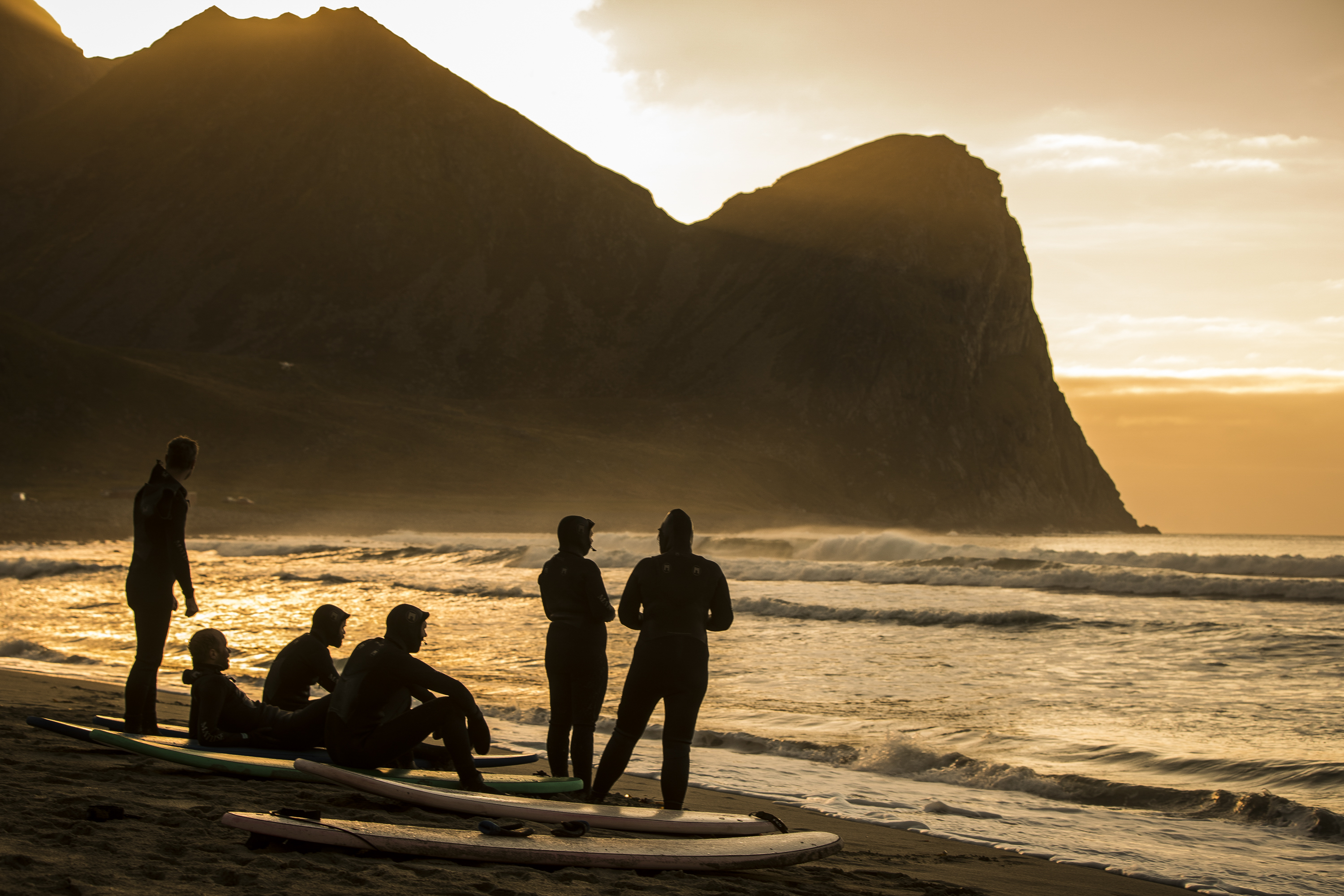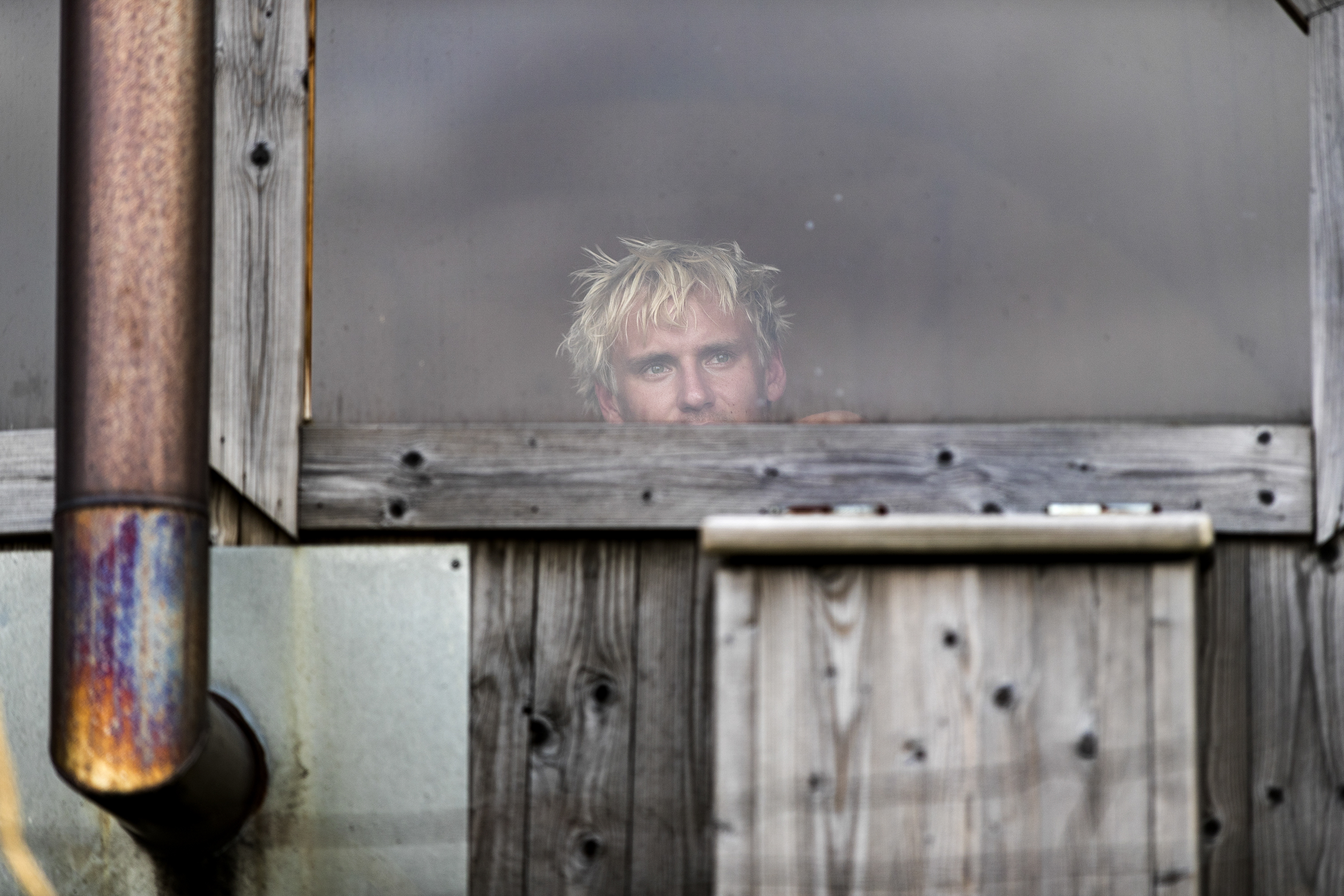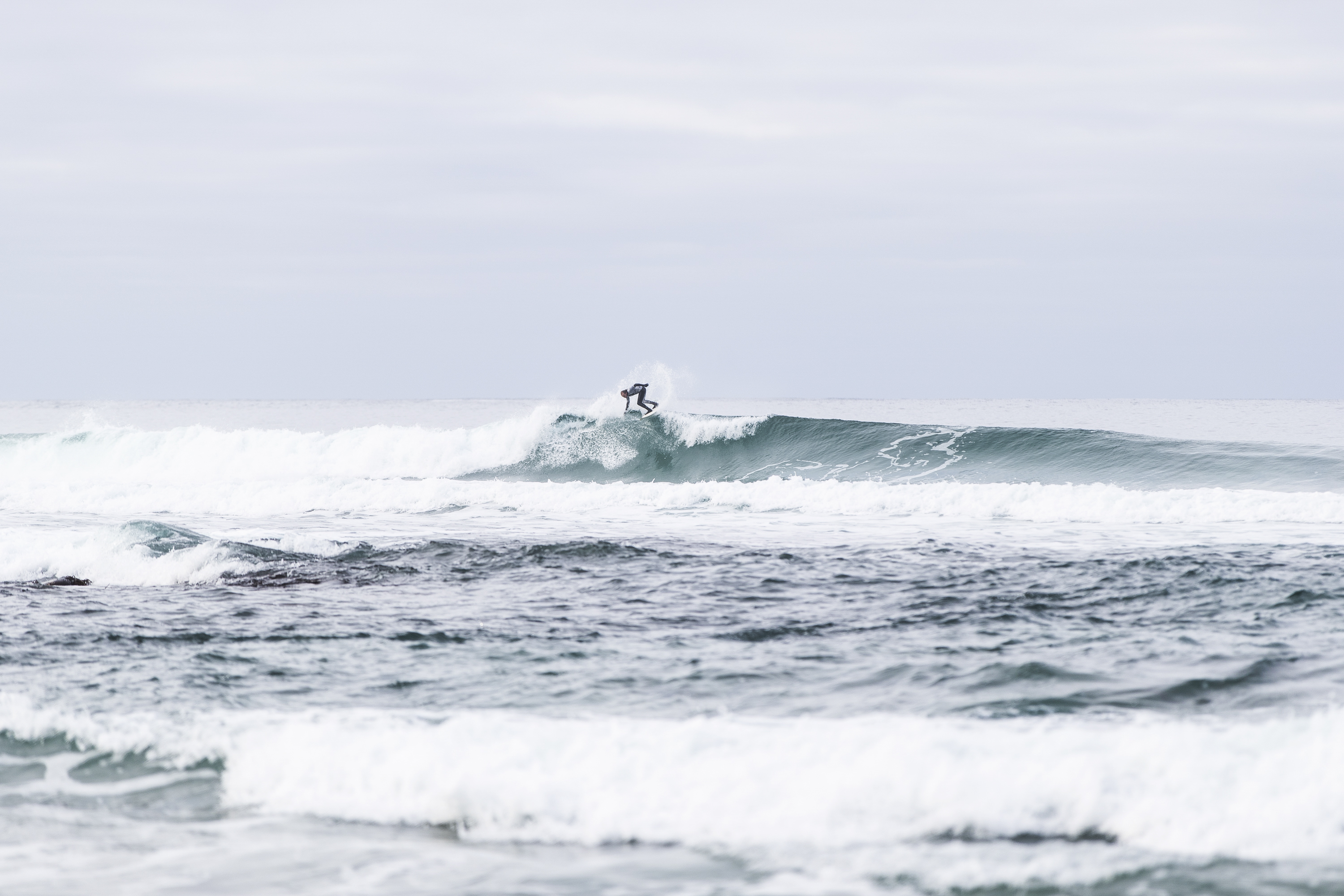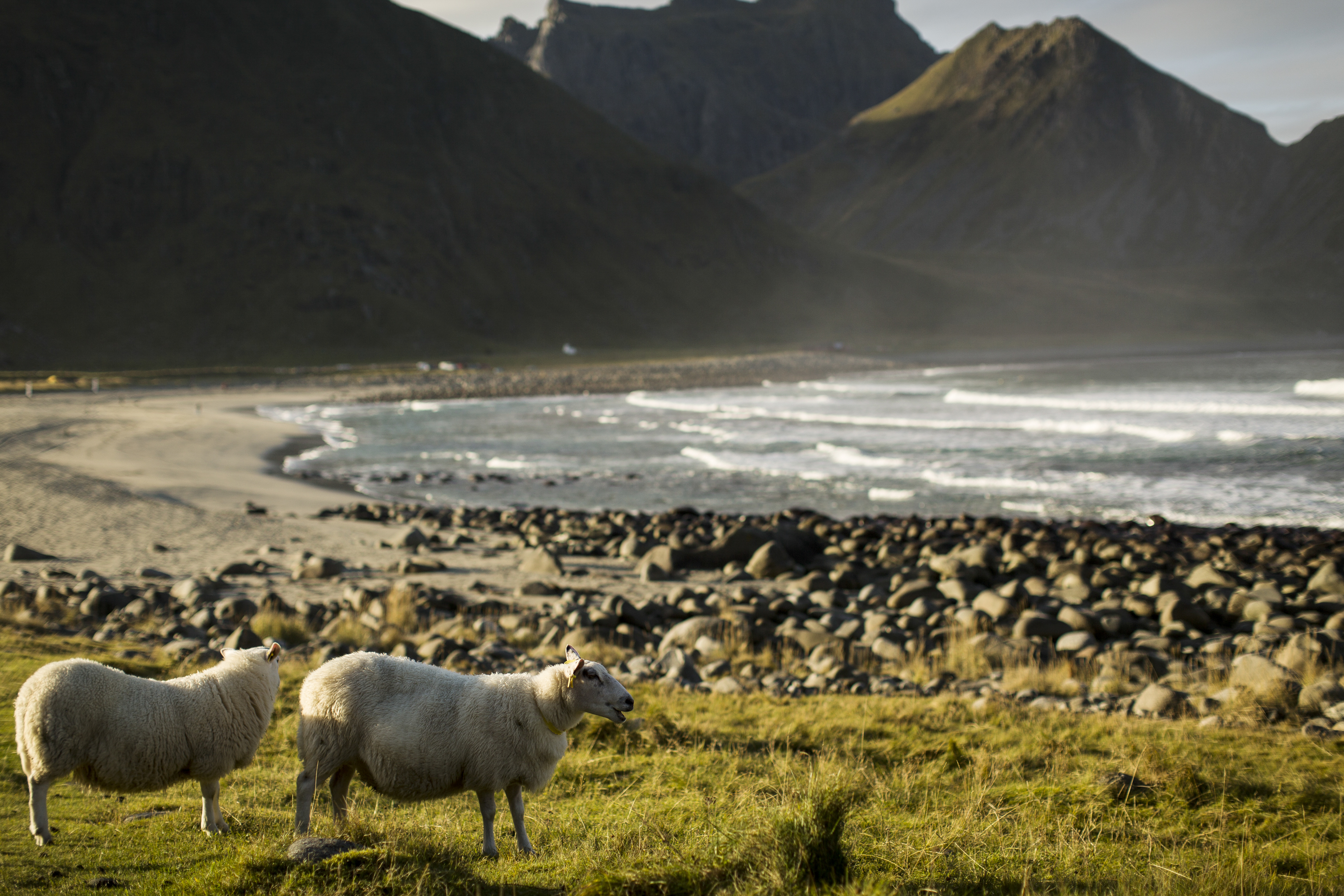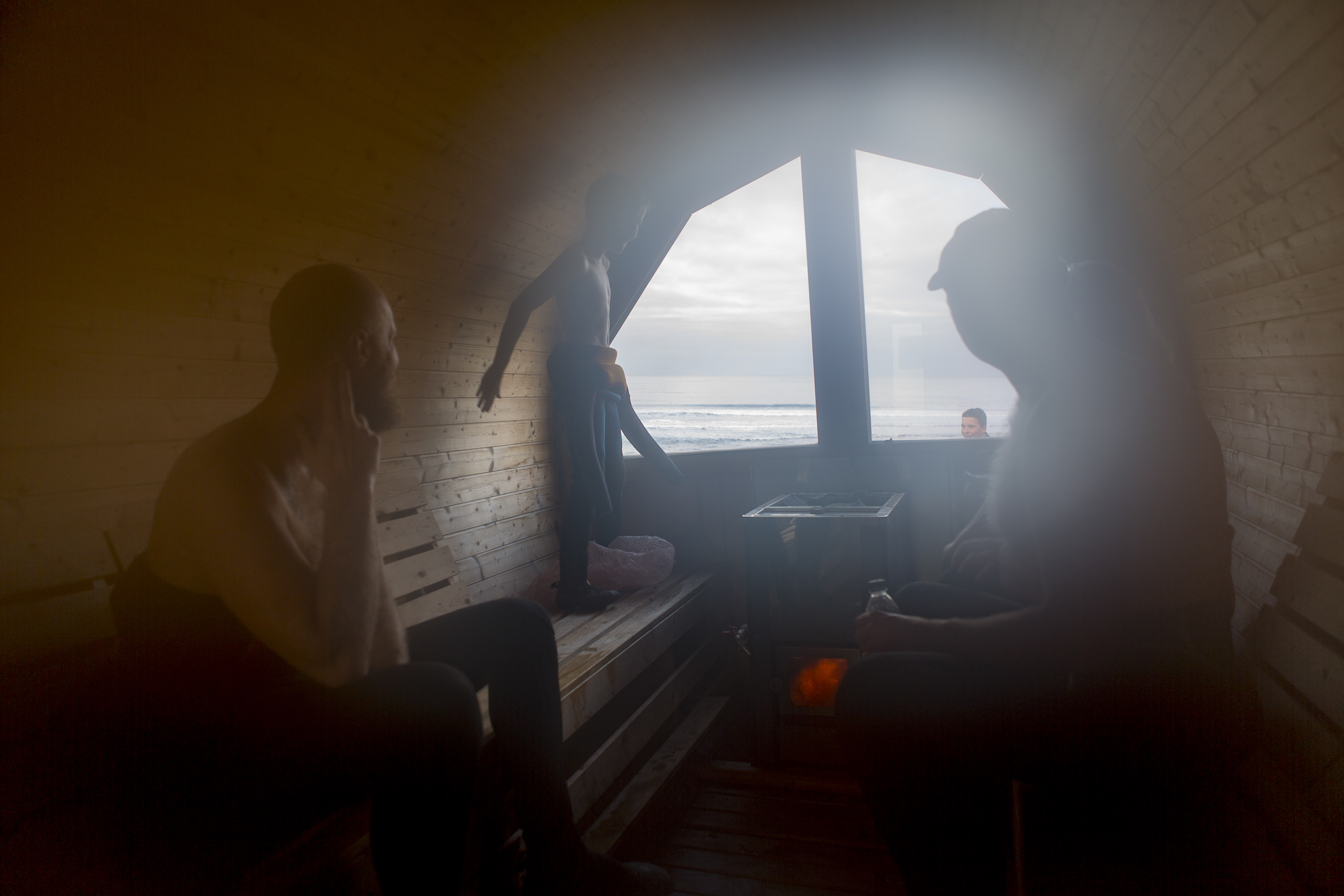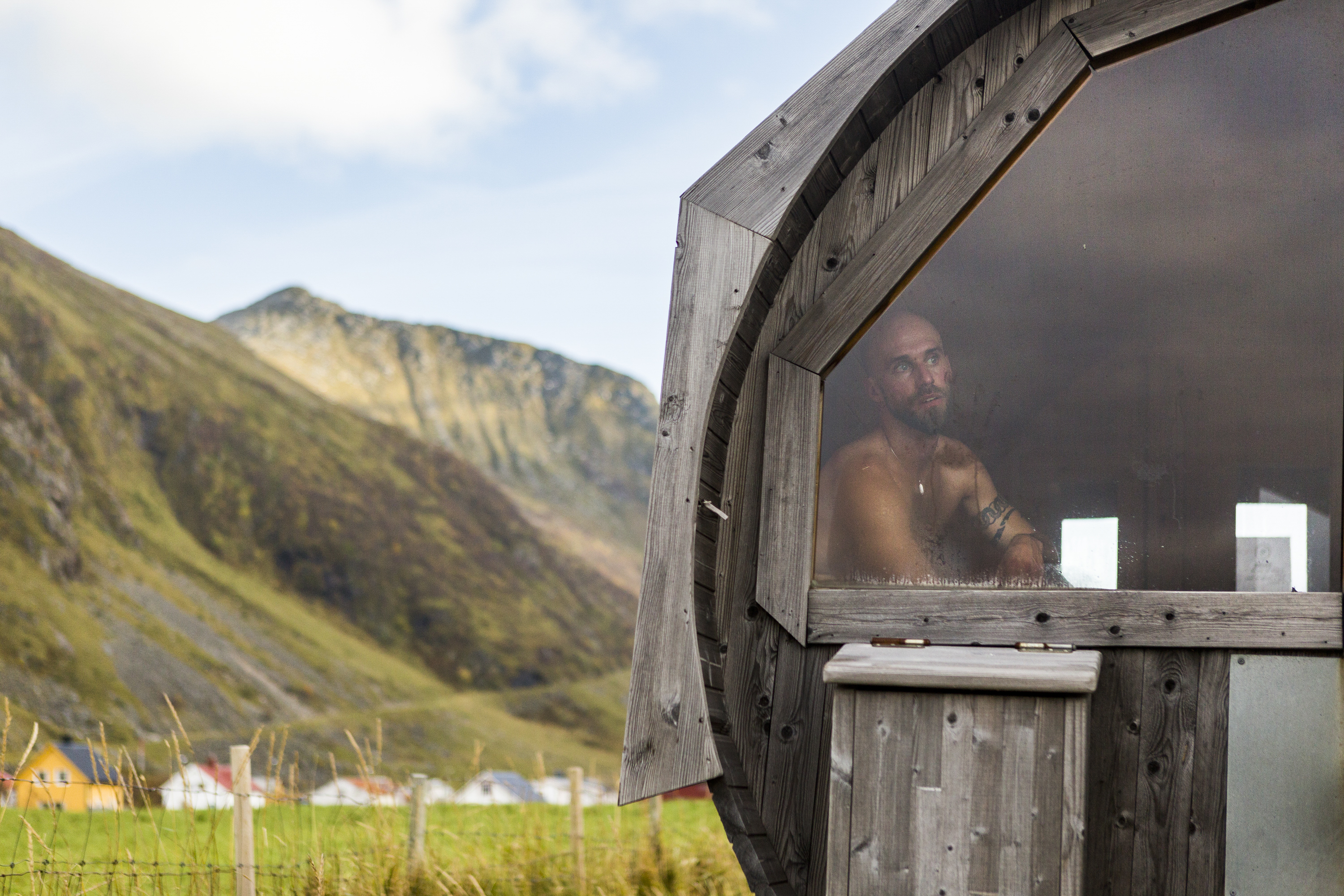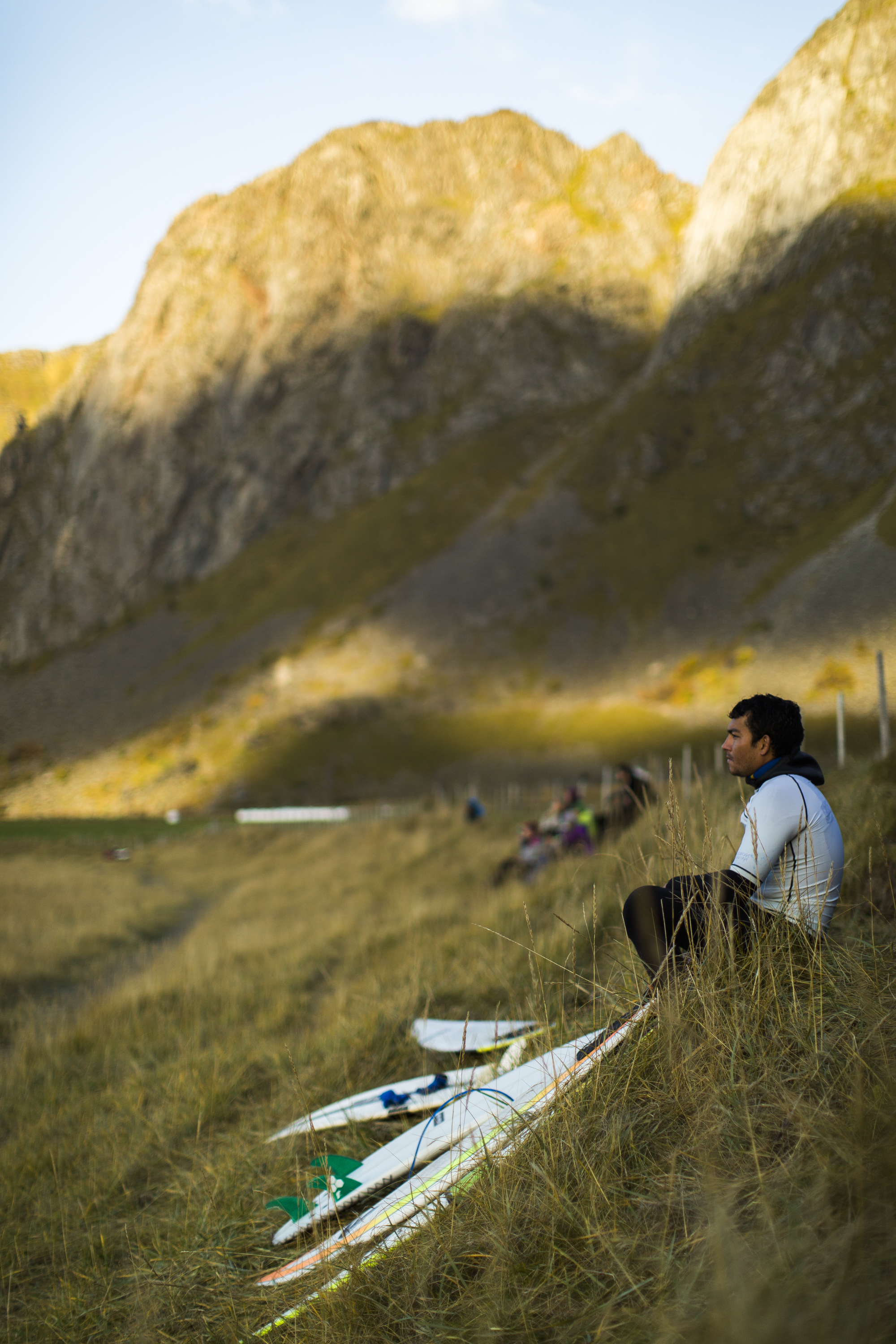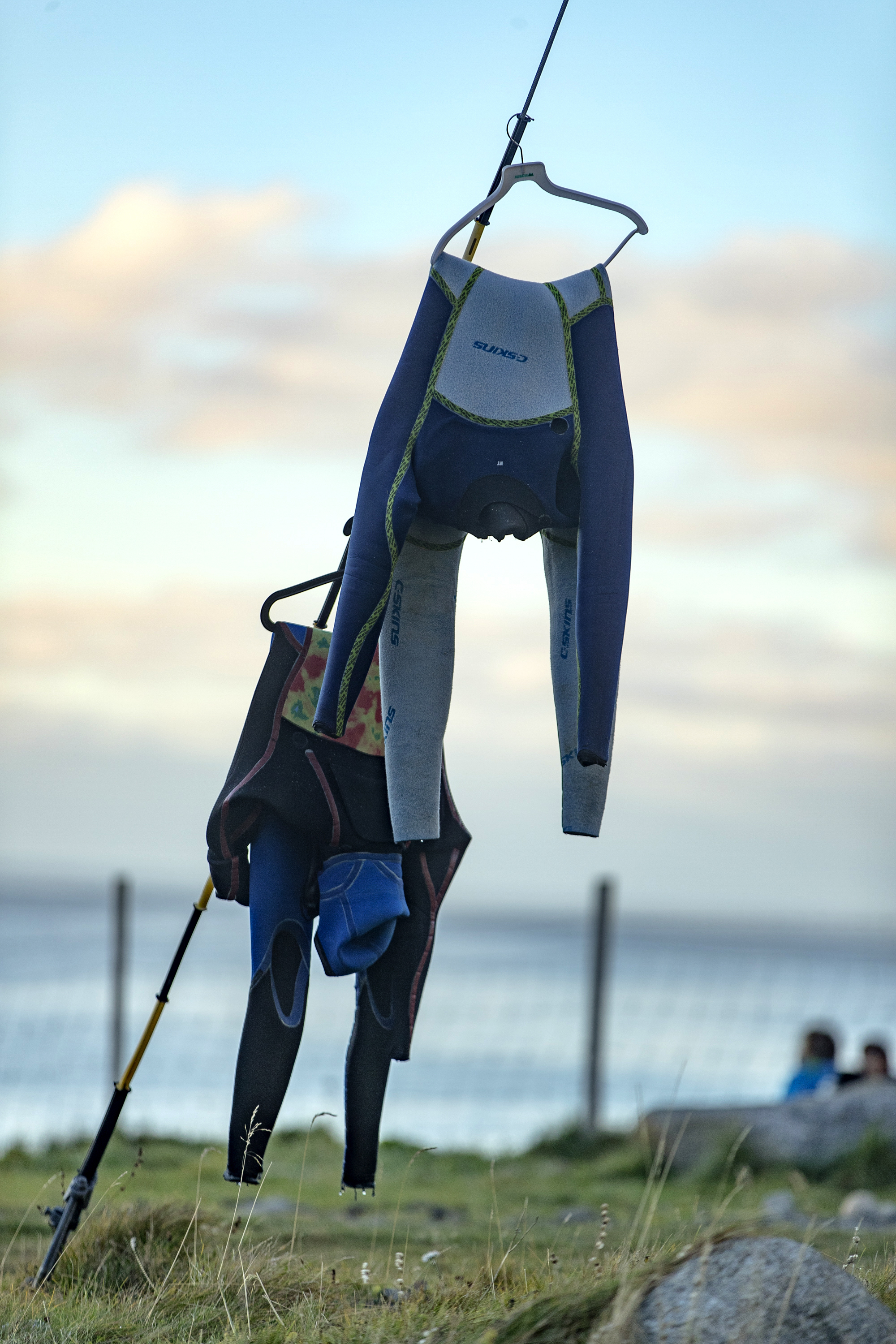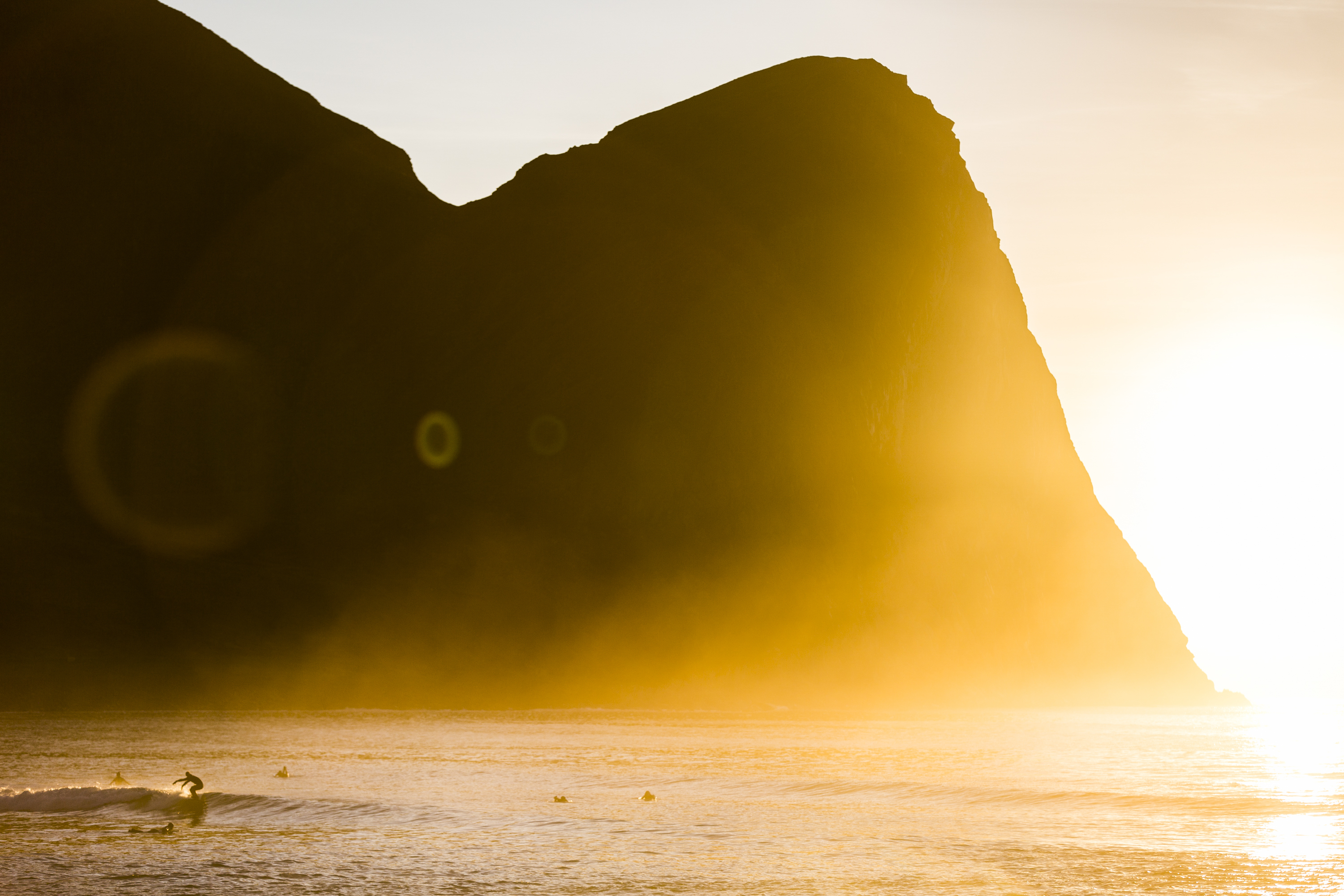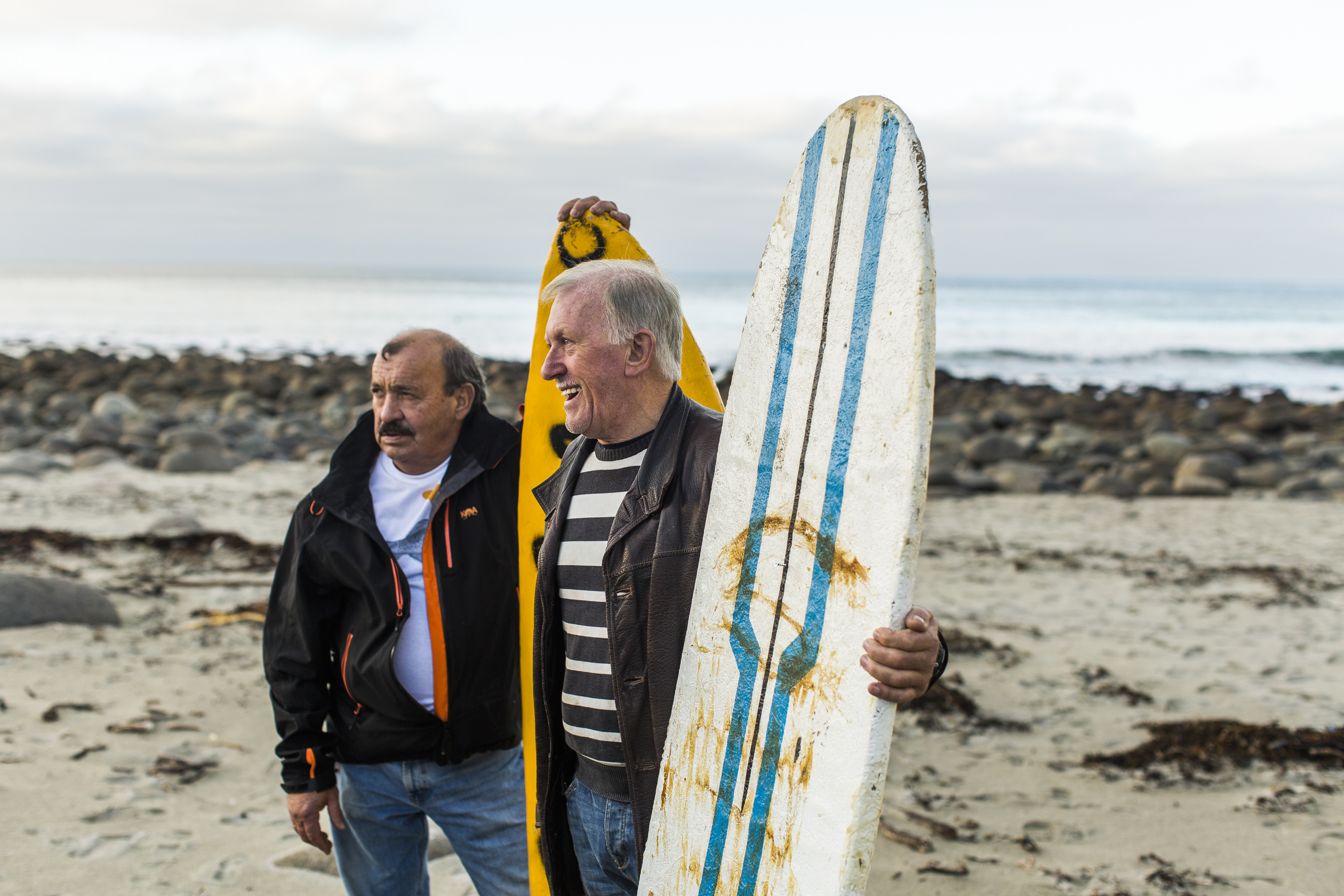Surfing under the northern lights and above the Arctic Circle
UNSTAD, Norway — This was all new to Tim Matley, a thin and boyishly blond Australian, who found himself above the Arctic Circle for the first time in this remote village with as many surf shops (two) as sheep farms.
His usual itinerary was six months of surfing in Australia, then six months in Indonesia. If the waves were high, that was great, as long as the temperature was higher. He had never before worn a hood, gloves and boots in a competition. In fact, he had seldom worn a wet suit.
“I like to feel my toes in the wax,” Matley, 34, said. “In boots, I can’t feel anything.”
His girlfriend, Guro Aanestad, a three-time Norwegian surfing champion, had just won the women’s title at the Lofoten Masters on Oct. 8. It is billed as the world’s northernmost surfing competition. Now Matley awaited the men’s final.
The valley at his back rose to a mountainous amphitheater. A crescent bay opened before him, its exposed, rocky points known for catching North Atlantic swell the way a net catches fish.
“It’s unreal how many people surf in conditions like this,” Matley said. “It’s beautiful, but it’s so cold. At least I got to see my first northern lights. That was good.”
Advances in the design of wet suits, which are made from neoprene, a synthetic rubber, have pushed surfing far beyond the summery, “Gidget,” “Surf City” culture of midcentury Hollywood and pop music.
[Surfing the swells of a distant Aleutian Island]
Since the 1990s, and especially in the last decade, enhanced insulation in the suits has opened some of the most frigid reaches of the world — Alaska, Antarctica, Canada, Greenland, Iceland, Norway, Russia, Sweden — to surfers seeking isolated adventures, craggy nature and uncrowded and unexplored waves.
“Everyone has done the tropics,” Timothy Latte, 25, a Swede who won the 2015 Lofoten Masters, said. “Cold water surfing is the new black.”
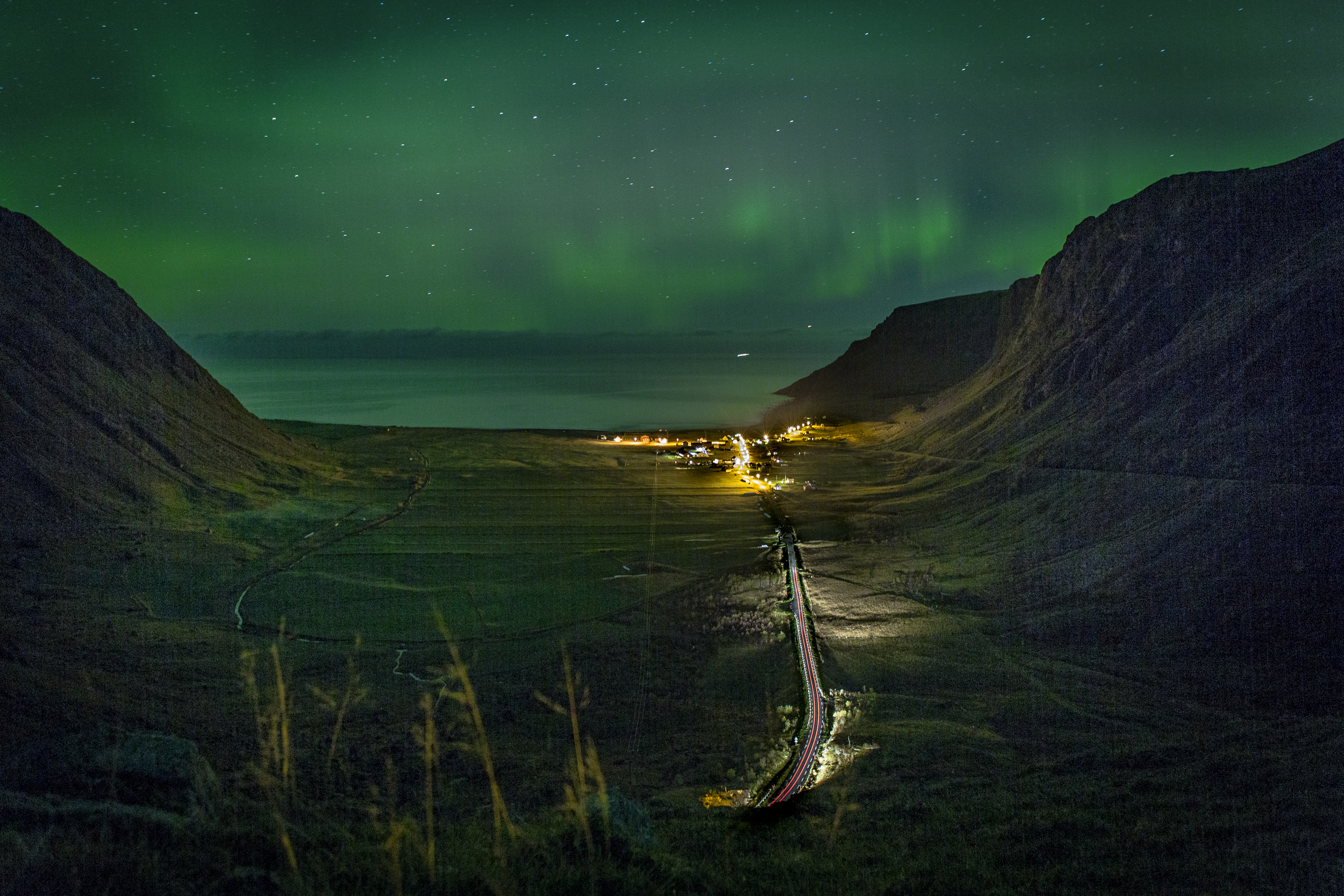
Today’s wet suits, which often cost $200 to $500 but can run to $1,000, are warm, light and flexible. Some come with battery-powered heat. All provide far more reliable protection from the cold than early, improvised gear fashioned from wool sweaters coated in oil; rain jackets and pants taped at the wrists, waist and ankles; dishwashing gloves; bathing caps; and generous slatherings of Vaseline.
Satellite images provided by Google Earth and Google Maps have also brought a sense of discovery to places more reachable by bush plane, boat, helicopter and snowmobile than dune buggy.
At the same time, residents of some remote locales have begun wrestling with the complicated balance of welcoming larger numbers of surfers while keeping pristine settings safe and unspoiled.
Unstad, population 15, is among the Lofoten Islands, an archipelago that juts like an arthritic finger from Norway’s west coast into the Atlantic, more than 100 miles above the Arctic Circle.
[Video: Arctic surfing in Norway]
With consistent waves and the rugged beauty of mountains that drop into the sea, the village is relatively easy to reach by car, ferry or plane. And despite Matley’s protestations, it is warmed somewhat by the Gulf Stream.
While the water temperature can dip into the 30s during winter, when snow powders the mountains and daylight is a smudgy twilight, the surf averages about 45 degrees Fahrenheit and can climb to the mid-50s during summer.
During the Lofoten Masters on Oct. 7 and 8, the air temperature reached 45 and the bay reached 50. Coming out of the water seemed far chillier than being in the water.
The 28 male and eight female competitors were mostly semiprofessionals from Norway, Sweden, Brazil, Australia, South Africa, Russia and France. Most were living in Norway or working seasonal jobs or following a boyfriend or girlfriend. They rented surf shop cabins, drove pop-top campers or slept in tents under the Northern Lights, drawn by the tranquillity and splendor and muscle of the surroundings.
“When you first see the mountains and the valley and the power of the waves, it’s intimidating,” said Thiago Martins, 40, a Brazilian who played college and professional soccer in the United States and surfs when he is not teaching special-needs children or coaching a semipro Norwegian team.
“The first time I was here, my heart was pounding,” he said. “I felt small, scared. But you also connect with nature, and it embraces you.”
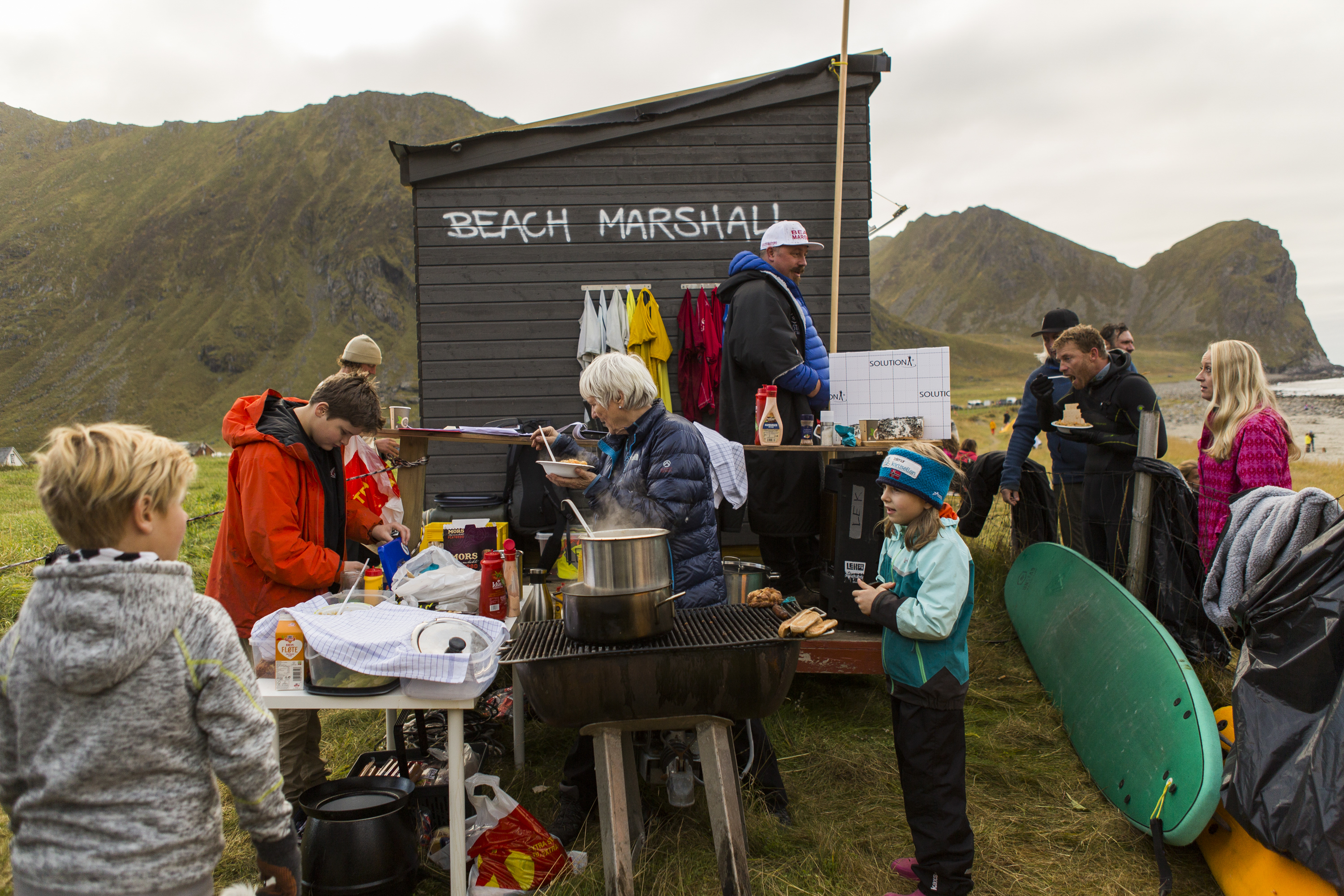
In autumn in Unstad, when the valley flames with the gold of birch trees against the red of the houses, there are often more sheep than people on the beach. The waves rumble like subway cars, foaming on white sand and rounded rocks that, from a distance, resemble a colony of seals.
“Sheep poo is a good sign,” Manuel Palacios, 26, of Spain, a judge for the Lofoten Masters, said. “It means there is not a big hotel in the middle of the beach.”
More and more people are coming to surf in the Midnight Sun of summer and to camp and to hike mountain trails with breathtaking views. There have been mishaps. In September, a man from Finland was trapped in a rip current, fell from his kayak and drowned.
[From Mexico to Alaska, surfing one swell in 8 days]
Where there was once only a handful of people surfing on a summer day, there might be 50 or more now, locals said, not many for Hawaii, maybe, but a crowd for Unstad. There are no public toilets on the beach and only limited parking.
“Like any activity, when you have too many people crammed together, you can feel like you’re in jail,” said Kristian Breivik, 46, who owns the Lofoten Surfsenter in Unstad and has surfed here since 1988.
“But everybody is welcome,” Breivik said. “I’m a businessman. You can’t stop tourism. I’m proud to be from this place. But we have a huge responsibility for keeping it natural and beautiful and providing for basic needs.”
Torstein Krogh, 68, a community leader who was born in Unstad, said the surfers — yearly estimates range from 2,000 to 5,000 or more — were generally welcomed. But, he added, “we should be prepared for them” with bathrooms, more spacious parking and electrical hookups for campers.
A tourism tax is being considered to upgrade facilities in Lofoten. Yet some locals in Unstad, an insular place with a mostly older population, clearly need convincing that more surfing is better, as evidenced by a homemade “no trespassing” sign near the beach during the Lofoten Masters.
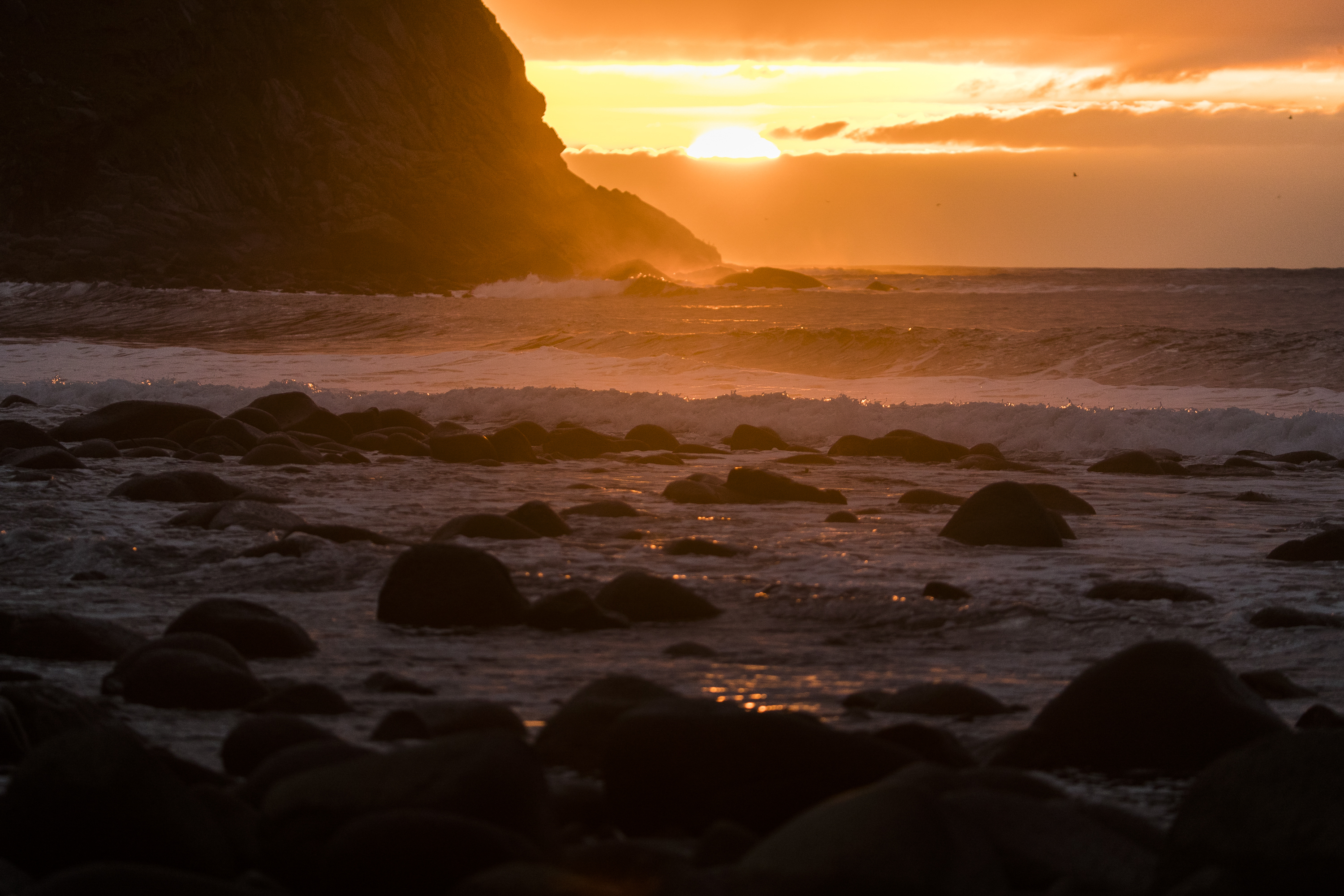
“Old people don’t want change,” Krogh said. “They are dinosaurs. But the No. 1 law of nature is change.”
Among the first surfers at Unstad were two Norwegians named Thor Frantzen and Hans Egil Krane, who arrived with teenage possibility in 1963. Krane, now 70, had been to Australia on a cargo ship. A dockworkers’ strike extended his stay in Sydney for two months, and he witnessed something at Bondi Beach that he had never seen: surfing.
Having tried it, Krane returned home and excitedly told Frantzen: “Men are standing on boards. There are a lot of nice beaches in Norway. Why can’t we do it here?”
They were young and hardy, with careers ahead as commercial divers. There was no place to buy surfboards in Norway, so the two began to make their own from what they described as rigid foam wrapped in newspapers and coated with a shell of polyester resin and fiberglass.
Two of their early boards still exist. One looks more like a kayak than a surfboard. It is thick and yellow, and some jokingly call it the banana board. Frantzen’s grandson can still ride it. The other board is more professional and familiar in its retro design, white with blue and black stripes, modeled from the cover of the Beach Boys’ 1962 album, “Surfin’ Safari.”
With no wet suits, Frantzen and his friend began surfing in bathing suits. Ten or 15 minutes in the water and they had to escape the cold. Later, they wore wool sweaters under stiff, rubbery diving suits. If there were other surfers in Norway, they did not know of them.
“People looked at us like we were from another planet,” Frantzen, 67, said.
To be honest, Krane said, the boards were probably more effective atop the car than atop the waves.
“It was an easy way to meet the girls,” he said.
[Video: Surfing the bore tide in Turnagain Arm]
When Frantzen’s daughter, Marion, began surfing Unstad in 1991, she said that residents were “horrified” and warned her: “Don’t go to the beach. It’s going to be dangerous.”
After her parents opened a camping business and began to rent a few surfboards in 2003, Marion Frantzen said, even her father came to believe it was a waste of money. Marion, 45, and her husband, Tommy Olsen, 47, bought the business, expanded it and renamed it Unstad Arctic Surf. They provide cabins, a restaurant, surf gear and lessons and organize the annual Lofoten Masters.
In 2013, they secured a corporate sponsor, gathered a field of 105 surfers and gave out $10,000 in prize money. But the couple “was a little over our heads,” Olsen said, then joked, “We’re still struggling with anxiety attacks.”
Now, the tournament is more casual, focused as much on the social aspect of surfing as the competitive side. At Unstad Arctic Surf, the decorative vibe is decidedly hang loose and tropical, with Polynesian carvings on the walls, a souvenir Waikiki license plate and a ukulele in a stairway and a mannequin wearing a grass skirt and coconut bra in the dining room.
The competitors in the Lofoten Masters wore wet suits that Thor Frantzen and Krane, Unstad’s surfing pioneers, could never have imagined: thin coatings of titanium designed to trap and reflect body heat; inner linings said to transform body heat into infrared energy that enhanced warmth and blood flow; high-tech seams that restricted cold water from flushing through the suit with waterproof tape, glue, liquid urethane welds and a clever technique called blind stitching.
Most competitors wore what are called 6/5/4 or 5/4/3 wet suits, a reference to the thickness of the neoprene in millimeters. The suits are thicker in the torso and thinner and more flexible at the extremities to facilitate movement of the arms and legs.
“When we started, the suits were so dense we were like Sumo wrestlers wearing armor,” Breivik, the surf shop owner, said.
Some surfers and industry experts question whether science lives up to marketing with the latest wet suit innovations. “There’s definitely no empirical peer review that goes on,” said Matthew Miller, 47, a lawyer and the chief executive of True Wetsuits, a company based in California that manufactures surf wear for Unstad Arctic Surf.
Yet no one is seeking a nostalgic return to the days when hands grew crabbed and numb from surfing and then struggled to open a car door with a key.
Describing his youth, Miller said with a laugh, “You do not know pain until you are huddled around, hoping someone can get their fingers warm enough to open the lock and you’re starting to cry because it hurts so bad.”
[Four days on the Milo: surfing and stand-up paddling near the Kenai fjords]
At the Lofoten Masters, there was no need to jump into a car to get warm. Olsen, the chief organizer, towed a portable sauna to the beach, affixed with a sign on the door: Please Do Not Be Naked. A candy and ice cream stand from the surf school was converted to a judging tower. Hot dogs, hamburgers and lamb stew were cooked on a grill.
Olsen served as the tournament marshal, livestream commentator and exuberant public-address announcer, even mimicking the sound of a horn to signal the end of each heat. In a playful reference to the U.S. presidential election, he wore a hat that said, “Make Longboarding Great Again.”
On the first day of competition, a slight onshore wind blew perpendicular to the beach. Head-high waves formed quickly and then collapsed. The surfers took it in stride. Most had been in far more challenging conditions.
In 2013, Markus Wegge, 28, traveled with his two brothers to Bear Island, about 250 miles north of Norway’s mainland in the Barents Sea, to make a documentary about food waste. For two months, the brothers lived in a teepee-like tent, using drift wood for heat and eating food that had been discarded by supermarkets and the military or scavenged by Dumpster diving.
After duck-diving two or three times beneath the waves in 28-degree water, Wegge said: “Your brain freezes. It starts on top and moves to the side of your ears. Like a vise. Your chin gets stiff. We tried to whistle but we couldn’t. But it was fun to surf someplace that’s never been surfed.”

On the second day of the Lofoten Masters, the waves were smaller but more defined and accommodating for tricks. Aanestad, 29, the Norwegian champion and an architect, won the women’s competition. She was one of the few surfers, perhaps the only one, at the contest who owned a heated vest.
Wet suits heated by batteries were introduced by Rip Curl, an Australian company, in 2007, and were tested in Unstad. The suits, often worn as vests beneath a full wet suit, have been described as electric blankets for the water, designed to heat the core so that blood will continue to flow toward the extremities. But some surfers expressed concern about the cost, the battery life and an intrusion of too much technology.
“It’s a little like cheating; you are supposed to be a little cold,” Aanestad said good-naturedly. “But I feel less pain in my back. And my feet go numb before the battery wears down.”
Her vest, though, was made for men. Because so few women surfed in Norway, Aanestad said, surf shop owners were reluctant to carry the latest in thermal gear for them, including suits with attached hoods, afraid of losing money.
“It’s a little disappointing,” Aanestad said.
The men’s final featured three former champions. One was Latte, the Swede. Another was Gil Ferreira, 30, of Brazil, a four-time winner who said he learned to surf as a boy using a container for carrying coconuts that he sold on the beach.
On his first trip to Unstad seven years ago, he tried surfing without gloves and boots. “My legs felt like stumps,” Ferreira said. “I couldn’t stand on the board.”
Another previous winner, Shannon Ainslie, 32, of South Africa, surfed with power and a certain fearlessness that had been frighteningly hard-earned.
In a widely publicized incident, caught on video, Ainslie was attacked by two great white sharks as he surfed in East London, South Africa, on July 17, 2000. He was flung from his board, then dragged beneath the water by his right hand, which would need 30 stitches to repair.
“Maybe that’s another reason why I came here,” said Ainslie, who works at the Lofoten Surfsenter. “To stay away from sharks.”
In the final, though, no one matched the speed, flow and commitment of Matley, the Australian who made for an improbable champion.
Beforehand, he stood outside the sauna, wanting to spend a few minutes inside but worried that he would get too hot. He wore a thinner suit than most competitors. And he felt that his front foot gripped his board too tightly in neoprene boots.
But in the final, Matley was a model of ambition, power and control, assured technically and stylistically with his snap turns, weightless-seeming floaters along the lips of waves and a 360-degree maneuver called an air reverse.
“He knows how to rip a wave!” Olsen shouted into the public-address system.
Afterward, Matley shivered as he was announced the winner and sprayed with Champagne.
“He’s never been so cold in his life,” Aanestad, his girlfriend, said with a laugh.
The next day, Matley was returning to Australia. He did not plan to wear a wet suit for nearly a year. “I should burn it,” he joked.
That would not be an option for anyone who continued to surf in Unstad.
